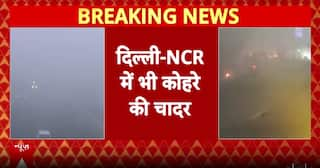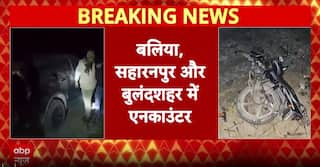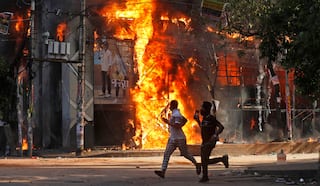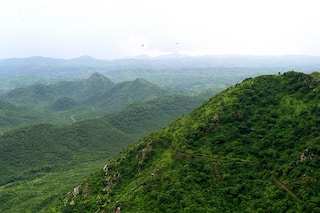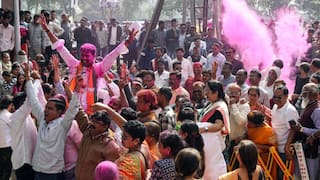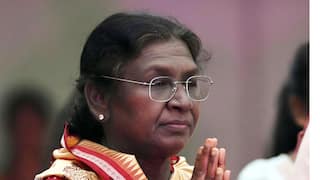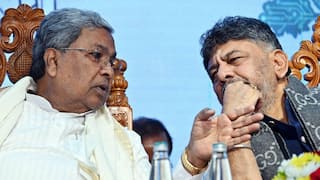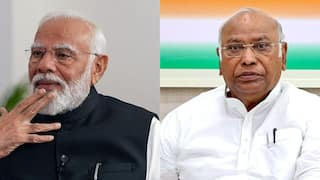Jallianwala Bagh: The British Empire And The Day Of Reckoning

April 13 is never likely to be forgotten in India, certainly not in Punjab. That day, 103 years ago, 55-year-old Reginald Dyer, an acting Brigadier-General in the Indian Army born in Murree, in what is now Pakistan, ordered fifty Gurkha and Balochi riflemen to commence firing without warning upon an unarmed crowd of over 15,000 and perhaps as many as 20,000 Indians gathered at an enclosure called the Jallianwala Bagh in Amritsar, a stone’s throw from the Golden Temple.
The firing ended only when the troops ran out of ammunition; most of the 1650 rounds met their target, judging from the official tally of 379 dead and some 1,200 wounded. Some Indian estimates of how many people were killed ran to about 1,000.
As the narrator Saleem in Salman Rushdie’s novel Midnight’s Children recalls, Dyer told his men: “Good shooting.” The men had done their duty, order had apparently been restored: “We have done a jolly good thing.”
It was Baisakhi, the first day of the spring harvest festival, and crowds from the city and adjoining countryside were milling around the Golden Temple and the vicinity. But the days immediately preceding had been taxing, ridden with uncertainty and violence. Though Indians had given their lives by the tens of thousands in World War I, a war which was scarcely their own, they got rewarded at the end of the war with increased repression. True, in mid-1918, the “Montagu-Chelmsford Reforms” led to a minimal increase in Indian franchise and similarly a limited devolution of power to the central and provincial legislative councils.
From the standpoint of Indian liberals, these reforms were too little and too late, and the more militant-minded among Indian nationalists clamoured for much greater concessions from the British. Nor did Indians seem prepared to accept the preposterous idea, which the English took rather too seriously about themselves, that their word was as good as gold or that they believed above all in the idea of “fair play”.
Unfortunately, British goodwill would soon be exposed as a mere chimera. A committee appointed to inquire into alleged revolutionary conspiracies headed by Justice Rowlatt recommended the suspension of civil liberties, and repressive legislation followed in quick succession. The British resort to preventive detention in an attempt to squelch nationalist agitation was captured in the headlines of one Lahore newspaper in early 1919 with the phrase, “no dalil, no vakeel, no appeal.”
Mohandas Gandhi, who had returned to India from his twenty-year sojourn in South Africa four years ago, responded to the Rowlatt Acts with a call to the nation to observe a general hartal and so launched himself into national politics. “The whole of India from one end to the other, towns as well as villages,” wrote Gandhi in his autobiography, “observed a hartal on that day. It was a most wonderful spectacle.” This was just days before the Jallianwala Bagh massacre. Punjab was being governed by Sir Michael O’Dwyer, a firm believer in authoritarian rule who fancied himself a saviour of the simple-minded Indian peasants who, according to him, had nothing to do with politics and deserved protection from treacherous urban Indian elites.
Like Reginald Dyer, with whom he is often confused, O’Dwyer was of Irish extraction, a perhaps not unimportant fact considering that the Irish were brutalized by the English and in turn brutalized those whom they colonized in policing the British empire. O’Dwyer did not at all take kindly to the defiance of authority and was certain, from his apparent study of history, that the great and firm hand of the British had not only saved Punjab from the mutiny of 1857-58 but had been crucial in enlisting the aid of the Sikhs in suppressing the mutiny. The government had no greater task than to uphold “law and order” and, watching the effects of the hartal initiated by Gandhi, he warned that the agitators “have a day of reckoning in store for them.”
What transpired in the days just before the massacre at Jallianwala Bagh need not be recounted at length. Deputy Commissioner Miles Irving inadvertently revealed what truly stoked the anxiety of the British when, in a telegram to O’Dwyer on April 9, he described the Muslims and Hindus of Amritsar as having “united.” That the Hindus and Muslims might unite was equally incomprehensible and alarming.
The British responded to this wholly unwelcome show of solidarity among Indians with the arrest and expulsion of two local leaders, Dr. Satyapal and Dr. Saifuddin Kitchlew, precipitating large demonstrations. Twenty Indians died in police firings; British-owned banks were attacked by crowds. Nothing infuriated the British more, however, than the assault on an Englishwoman, Marcia Sherwood: she was badly beaten but saved by other Indians. The white woman was nothing short of sacred, inviolable, “untouchable” to the Indian. The men of the ruling colonial elite perceived the loss of her dignity as an affront to them. Their humiliation had to be avenged, and so it was: the street where Miss Sherwood had been assaulted was sealed off and Indians had to crawl if they wished to make their way in or out of the lane. A flogging post was set up to whip sense and discipline into those Indians who might dare to act otherwise.
Gandhi would subsequently describe “the crawling lane” as the site of a national humiliation. Once the firing at the Jallianwala Bagh had stopped, Dyer did not stop to render aid to the wounded. He would later state that no one asked for his help — who would ask for help from a butcher, one might ask — but his real attitude is betrayed by his confession that as a soldier and officer of the law, his job was not to aid the wounded. That was not his business. The city was under martial law, and what the British described as “disturbances” had rocked other parts of the Punjab. Demonstrators were strafed from the air: this initiated a new phase in colonial warfare, and George Orwell in a scintillating essay noted the corruption of the English language entailed in describing such brutal suppression as “pacification.”
O’Dwyer, who signalled his approval of the actions taken by Dyer in Amritsar, was quite certain that Punjab had been saved from a dire situation which recalled the Rebellion of 1857-58. Indeed, in the months ahead, the spectre of the Mutiny loomed over the prolific debates about the measures taken by the British to contain the disorders.
1919, however, was not 1857. The Indian National Congress was now a formidable organization and the British had failed to fully comprehend that politics had entered the phase of plebeian protest. Hundreds of people had been killed in cold blood, all because Dyer, by his own admission, had sought to “teach a lesson” to “wicked” Indians” and create a “wide impression” of the costs of defying lawful authority.
The idea of “fairness” and the notion that the British had instituted a regime of “law and order” that offered Indians deliverance from “despotism” had long been the principal pillars of colonial rule, and an inquiry into a massacre that threatened to stain the good name of the British was all but inevitable. It came in the form of the Disorders Inquiry Commission, presided over by Lord William Hunter of Scotland. Many Britishers in India resented the intrusion into Indian affairs from London.
The theory of “the man on the spot” was one of the cornerstones of colonial governmentality. Dyer had been confronted with what he perceived to be a mutiny-like situation, and as the “man on the spot” he alone knew what was required to create a suitable effect. Armchair politicians in Britain had no business to impugn the judgment of experienced officers, they argued, and many in Britain also agreed. When, months later, Dyer was forced to resign his commission, the British public, led by the rabidly racist Morning Post, opened a fund in his name — the antecedent of the modern-day crowdfunding campaign — and raised £26,000 for him, an amount worth over £1.1 million today. The “Butcher of Amritsar” went into luxurious retirement, though I suspect that some Indians rejoiced that Dyer’s life was cut short by arteriosclerosis.
The “Punjab Disturbances” would come to occupy a distinct place in the annals of colonial Indian history. Most people, even Indians, remember only the Jallianwala Bagh massacre, but Gandhi was quite clear in his mind that the “crawling lane” order was even a greater wound on the Indian psyche. What the British created in Punjab was a regime of terror. The Congress appointed its own committee of inquiry, and it took a much harsher view of British actions than the official Hunter Commission. Indian affairs had never commanded much attention in Parliament, but, rather unusually, the Jallianwala Bagh atrocity and its aftermath were debated vigorously both in the Commons and among the Lords. Secretary of State for India Edwin Montagu opened the proceedings in the Commons with the observation that Dyer had a reputation as an officer whose conduct was “gallant”. Montagu was grateful for the service that Dyer had rendered to the Empire. Nevertheless, an officer who justified his actions with the submission that he was prepared to inflict greater casualties if he had the means to do so from none other than a motive “to teach a moral lesson to the whole of Punjab,” was guilty of engaging in “a doctrine of terrorism.” Montagu went on to charge Dyer for “indulging in frightfulness.” The grave import of this accusation would not have been lost on his fellow Parliamentarians: “frightfulness” was the English rendering of schrecklichkeit, the word first used to describe the terrorism inflicted upon Belgian civilians by the German army in World War I. That an English army officer should stand accused of pursuing the policies of militaristic Germans was an intolerable idea. The rampant anti-Semitism of the English elite already made Montagu, a practising Jew, a suspect figure, and in 1922 Montagu himself was forced out of politics.
There is by now a familiar narrative of the Indian reaction to the Jallianwala Bagh massacre. Every school history textbook describes how Tagore wrote a moving letter to the Viceroy where he asked to be relieved of his knighthood, characterizing the massacre as “without parallel in the history of civilized governments, barring some conspicuous exceptions, recent and remote.” More than twenty years later, Udham Singh, who was 20 years old at the massacre, sneaked into Caxton Hall in London where O’Dwyer was attending a lecture and shot him dead with a revolver. O’Dwyer had spoken of the day of reckoning and now he got his comeuppance. Remarkably, Dyer is the only person whose name Gandhi, with his own extraordinary flair for the English language, turned into an ideology. He wrote of “Dyerism” to signify the terrorist apparatus of a state that bears no responsibility to its subjects. It was the Jallianwala Bagh massacre and the atrocities in Punjab that, as Gandhi would describe at his trial in 1922, turned him from a “staunch loyalist” and “co-operator” to an “uncompromising disaffectionist” who was convinced that British rule had made “India more helpless than she ever was before, politically and economically.”
Much has been made of the fact that during the debate in the House of Commons, Winston Churchill condemned the “slaughter” at the Jallianwala Bagh as an episode “without precedent or parallel in the modern history of the British Empire.” Churchill of course had a way with words, and so he continued: “It is an extraordinary event, a monstrous event, an event which stands in singular and sinister isolation.” But by what measure do we describe the incident as “singular”? As wartime Prime Minister two decades later, Churchill was not merely indifferent to the plight of millions in Bengal facing acute food shortages, but almost certainly precipitated with his callous policies a holocaust that led to the death of three million people. It barely suffices to say that if ever there was an incident of the pot calling the kettle black, this would be it: the monstrosity of it is that Churchill, a dedicated racist his entire life, appears as the guardian of English virtues in this debate. As I shall argue in the subsequent essay, however great the atrocity of Jallianwala Bagh, the view that Jallianwala Bagh was somehow an exception cannot withstand scrutiny. The British were then, as they are now, unrepentant and the day of reckoning of the Empire has yet to come — even though British rule in India ended 75 years ago.
The author is a writer, blogger, cultural critic, and Professor of History at UCLA.
[Disclaimer: The opinions, beliefs, and views expressed by the various authors and forum participants on this website are personal and do not reflect the opinions, beliefs, and views of ABP News Network Pvt Ltd.]










